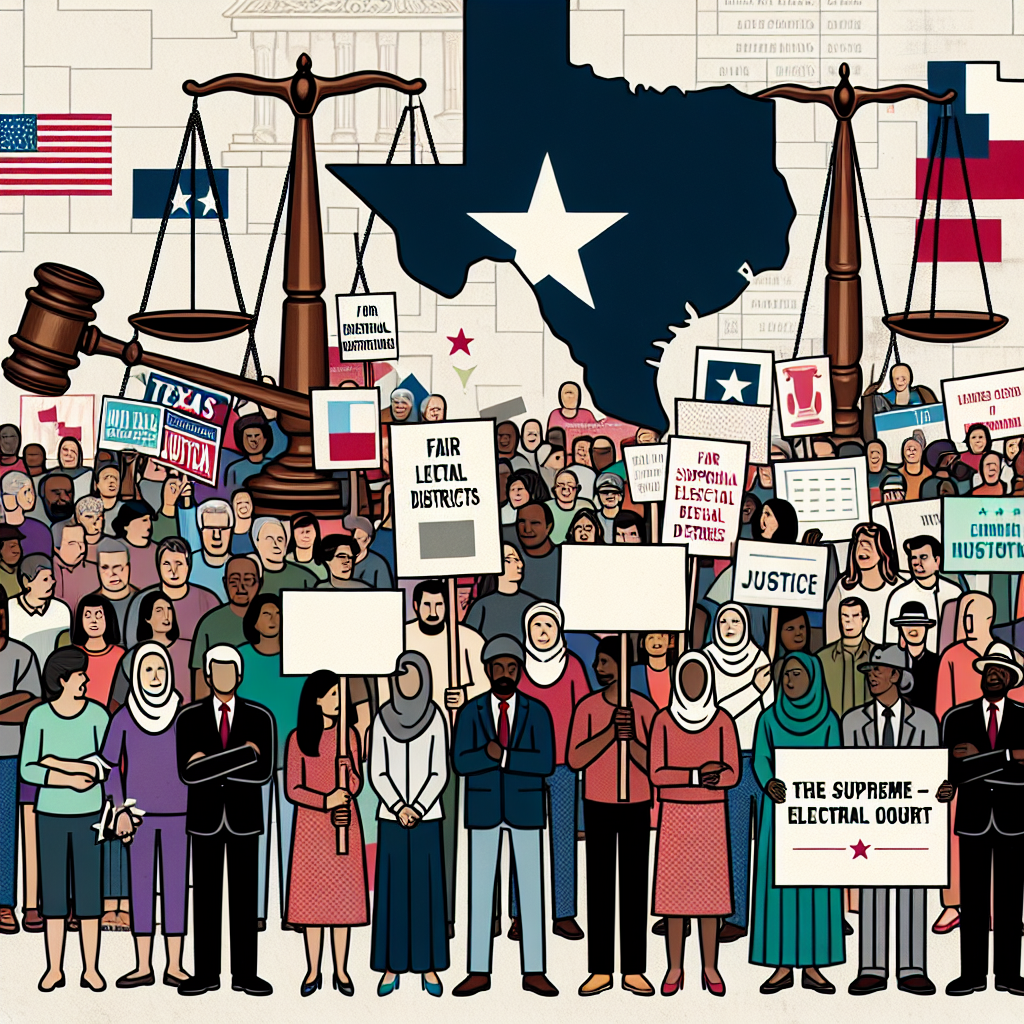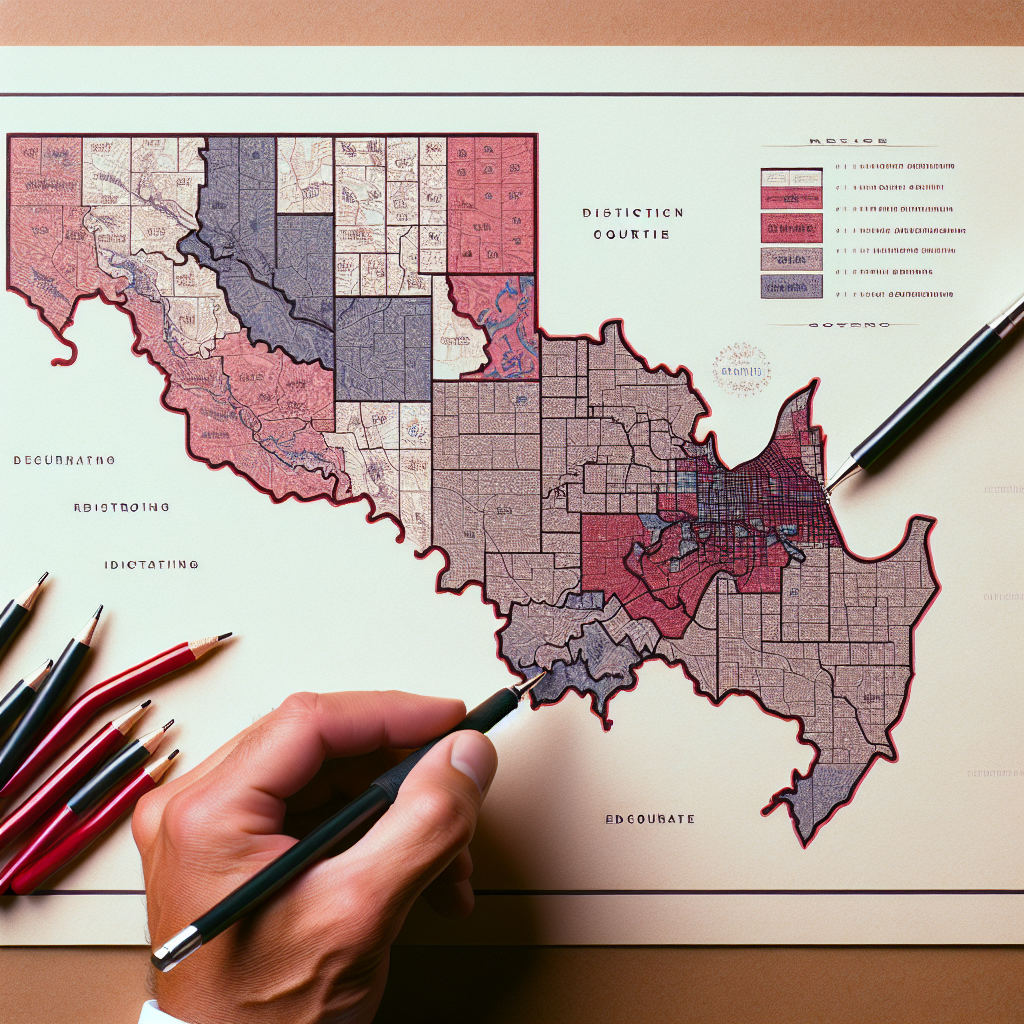Civil rights groups and Texas residents have raised significant concerns regarding the new congressional map adopted by the Texas Legislature in August. They argue that this map is racially discriminatory and violates the Constitution’s equal protection clause. The challengers, including the Mexican American Legislative Caucus, have urged the Supreme Court to uphold a ruling from a three-judge district court that prohibited the state from using the map in the upcoming 2026 elections.
Background of the Redistricting Controversy
The dispute over the Texas congressional map has its roots in a directive from President Donald Trump, who encouraged the state to redraw its districts to favor Republican candidates. Following this directive, the Texas Legislature made changes that resulted in the creation of five additional congressional districts. However, the Department of Justice intervened, warning that some existing districts were unconstitutional coalition districts, meaning they lacked a single racial majority.
In response to the Department of Justice’s concerns, Texas adopted a new congressional map the following month. This map was subsequently challenged in court, with opponents claiming it was the result of unconstitutional racial gerrymandering. On November 18, a majority of the three-judge district court found substantial evidence supporting these claims, stating that the new map relied excessively on racial demographics.
Legal Arguments Presented
During the recent Supreme Court proceedings, the challengers articulated their legal arguments against the redistricting map. They emphasized that when a state is explicitly directed to engage in racial redistricting and subsequently produces a map that meets these racial targets with precision, it violates the equal protection clause. They contend that such actions cannot be justified by any partisan explanations offered after the fact.
The challengers are pushing for the Supreme Court to reinstate the lower court’s ruling, which barred the use of the new map. They assert that the evidence of racial gerrymandering is clear and that the court should take immediate action to ensure fair representation for all Texans. The outcome of this case could have significant implications for the future of electoral districts in Texas and beyond.
Potential Implications of the Supreme Court’s Decision
The Supreme Court’s decision regarding the Texas redistricting map could set a precedent for similar cases across the country. If the Court rules in favor of the challengers, it may encourage other states to reevaluate their redistricting processes and consider the implications of racial gerrymandering. Conversely, a ruling in favor of Texas could embolden states to pursue aggressive partisan redistricting strategies without fear of legal repercussions.
This situation highlights the ongoing struggle over electoral fairness and representation in the United States. As the Supreme Court prepares to deliberate on this matter, many will be watching closely to see how it balances the interests of political parties with the fundamental rights of citizens.
- Understanding the role of texas redistricting challenge in shaping electoral maps.
- The significance of the major election law case and its broader implications.
The ongoing legal battle surrounding the Texas congressional redistricting map highlights significant concerns regarding racial discrimination and the integrity of electoral representation. Civil rights groups, along with various Texas residents, are urging the Supreme Court to uphold a ruling by a three-judge district court that deemed the new map unconstitutional. This legal challenge is rooted in allegations that the map was designed with racial gerrymandering in mind, violating the equal protection clause of the Constitution.

Arguments Against the Texas Redistricting Map
One of the primary challengers, the Mexican American Legislative Caucus, asserted that the state intentionally engaged in racial redistricting. They emphasized that the Texas Legislature had received clear directives to redraw the congressional map to fulfill racial targets, which they argue is a direct violation of constitutional protections against discrimination. The caucus contends that the map was crafted to achieve these racial objectives with remarkable precision, undermining the principle of fair representation that the Constitution mandates.
In the context of this dispute, the Department of Justice had previously identified four congressional districts in Texas as unconstitutional coalition districts. These districts, which do not have a single racial majority, were flagged for their potential to dilute minority voting power. Following this, the state was pressured to adopt a new congressional map. The swift legislative action taken by Texas in response to federal directives raises questions about the motivations behind the redistricting process and its implications for minority voters.
Judicial Review and Implications
On November 18, the three-judge district court ruled that there was substantial evidence indicating that the new redistricting map was the product of unconstitutional racial gerrymandering. This ruling was significant, as it highlighted the court’s recognition of the potential harm that could arise from a map designed primarily on racial lines. The court’s decision not only underscores the importance of equitable representation but also sets a precedent for how similar cases may be handled in the future.
Following the ruling, Texas officials sought intervention from the Supreme Court, requesting a pause on the district court’s decision. They argued that without this pause, the state would be unable to utilize the new map in the upcoming 2026 elections. This request has sparked a broader discussion about the implications of the Supreme Court’s involvement in state redistricting matters, particularly in light of the ongoing debates about partisan influence and racial equity in electoral processes.
As the legal proceedings unfold, the outcome will not only affect Texas but may also resonate across the nation. The Supreme Court’s eventual ruling could set important legal precedents regarding racial discrimination in redistricting. Furthermore, it may influence how future redistricting efforts are approached by other states facing similar challenges. The stakes are high, as the balance of political power and the rights of minority voters hang in the balance. For more insights into related legal challenges, consider exploring the racial discrimination lawsuit and its implications.
Broader Context of Redistricting Challenges
The Texas redistricting case is part of a larger trend of legal challenges to electoral maps across the United States. Similar cases have emerged in other states, where accusations of gerrymandering and racial discrimination have prompted courts to reevaluate the legitimacy of congressional maps. This phenomenon reflects a growing awareness of the need for fair electoral processes that accurately represent diverse populations. The Supreme Court’s handling of the Texas case will undoubtedly serve as a critical touchstone in the ongoing discourse surrounding electoral fairness.

In light of these developments, it is essential to consider how the judicial system navigates the complexities of race and representation in politics. The intersection of law, race, and electoral representation is a contentious issue that continues to evolve. As legal experts and civil rights advocates monitor the situation, the implications of this case will likely influence future legislative actions and judicial interpretations related to redistricting.
The Supreme Court’s decision in this matter could significantly impact the balance of power within the House of Representatives, as well as the rights of minority voters in Texas and beyond. The ongoing scrutiny of the redistricting process highlights the necessity for transparency and fairness in how electoral boundaries are drawn. To further understand the implications of upcoming voting cases, the supreme court voting case could provide additional context.
Ultimately, the Texas redistricting case serves as a reminder of the critical role that judicial oversight plays in safeguarding democratic principles. As the legal landscape continues to shift, it is imperative for stakeholders to remain vigilant in their pursuit of equitable representation and the protection of voting rights. The outcome of such cases will shape the future of electoral politics in the United States, reinforcing the importance of fairness and accountability in the redistricting process. For related discussions, the birthright citizenship challenge also serves as an important context for understanding the evolving legal framework surrounding these issues.
The ongoing legal battle surrounding Texas’s congressional redistricting map has raised significant concerns regarding racial discrimination. Civil rights advocates, alongside various challengers, have called upon the Supreme Court to reject the recently adopted map, asserting that it violates the Constitution’s equal protection clause. This situation underscores the complexities of redistricting in a diverse state like Texas, where the implications of political maneuvering can have lasting effects on representation.
Arguments Against the Redistricting Map
Challengers, including the Mexican American Legislative Caucus, argue that the Texas Legislature deliberately engaged in racial redistricting by creating a map that aligns with specific racial directives. They contend that the process was not merely a political strategy but a direct violation of constitutional mandates designed to ensure fair treatment for all citizens. The caucus emphasized that the map was crafted to meet racial targets with mathematical precision, thereby undermining the principle of equal protection under the law.
The backdrop of this legal challenge is a series of events that began when former President Donald Trump urged Texas to redraw its congressional map. This call for redistricting was further fueled by a directive from the Department of Justice, which identified several congressional districts as unconstitutional due to their status as majority-minority coalition districts. The urgency of this situation was compounded when the state legislature acted swiftly to adopt a new map in response to these pressures, raising further questions about the motivations behind the changes.

Judicial Response and Implications
The judicial response to Texas’s redistricting efforts has been swift and pointed. On November 18, a three-judge district court found substantial evidence of unconstitutional racial gerrymandering, indicating that the new map disproportionately relied on race as a factor in its design. This ruling has significant implications, as it not only challenges the legitimacy of the map but also sets a precedent for how redistricting efforts may be scrutinized in the future.
In light of this ruling, Texas sought intervention from the Supreme Court, requesting a stay on the district court’s decision. The state’s argument hinges on the assertion that the new map should be utilized for the upcoming 2026 elections, despite the concerns raised about its legality. The outcome of this case could redefine the landscape of political representation in Texas and potentially influence redistricting practices nationwide.
Looking Ahead: The Future of Redistricting in Texas
The ongoing litigation surrounding the Texas redistricting map is emblematic of broader national debates regarding race and representation in electoral politics. As the Supreme Court prepares to hear arguments, the stakes are high for both the challengers and the state. A ruling in favor of the challengers could lead to significant changes in how districts are drawn, while a decision favoring Texas may embolden similar redistricting efforts across the country.
Moreover, the implications of this case extend beyond Texas, as it could influence how courts interpret the equal protection clause in the context of redistricting. With the potential to set a national precedent, this case underscores the critical importance of fair representation in a diverse democracy. As the legal proceedings unfold, all eyes will be on the Supreme Court to determine whether the new congressional map will stand or be struck down for its alleged racial discrimination.
For those interested in the intricacies of this legal battle, the developments surrounding the texas supreme court appeal will be closely monitored as they may shape the future of electoral maps not only in Texas but also across the United States.